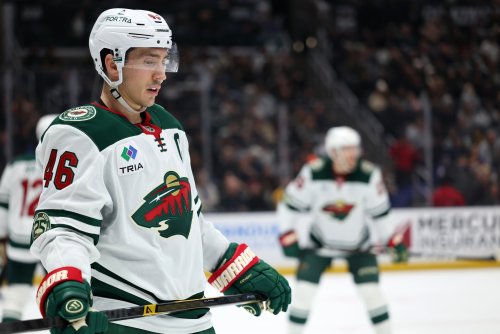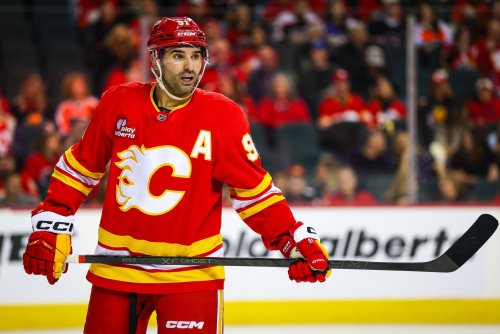
The two newest comers of the #FancyStats variety- War on Ice and Progressive Hockey- have some great features, including breakdowns of net minders. I've taken a look, and here's some of what they tell us about our three-headed goalie unit.
War-On-Ice
War-On-Ice is a relatively new site. It tracks save percentage in a number of different ways (as well as shooting percentage), and that is what makes it's information so interesting. They offer stats for multiple situations, but the following are at 5v5.
To me, at least, this information is very interesting. Kuemper, despite only playing 26 games, clearly played well for those 26 games (on average). Obviously there were some terrible individual games, but I think you would be hard pressed to argue that Kuemper was anything but very good last season.
The Shots per 60 category is interesting- as Joe pointed out, Harding faced fewer shots than either other goalie. Backstrom, on the other hand, faced the most shots per 60, which isn't good for the aging netminder.
The Sv%'s are what most fans use to judge a goalie. What War-On-Ice calls "Unadjusted Sv%" is the number most people are thinking of: the number of saves made divided by the number of shots that goalie faced.
I am intrigued by their "Adjusted Sv%." While the have not yet made their algorithms known, they have promised to blog about it in the future. In the meantime, they've explained it as adjusting save percentages based on frequency of shots from each "zone," which is explained in the graphic below. This is a way to adjust for some goalies having defenses play better around them than other goalies.
In order to talk about the "Sv % Low, Med, and High" we need a little clarification. Each of those refer to three "zones" on this graphic.
The "Sv% High" refers to the blue in the Slot and Low Slot, the "Med" Is the red in the High Slot, R-Slot, L-Slot, L-2, R-2, and C-Point. "Low" is the yellow: everything else.
War-On-Ice also points out that these zones have been shown empirically to have higher (or lower) fenwick shooting percentages .
via war-on-ice.com
Looking at the zone-specific save percentages, the number that sticks out has to be Kuemper's Sv% High; it is nearly 5 full percentage points higher than the next-closest (Harding's). Harding makes up for this (almost) in the Sv% Med category, where he out-saves Kuemper by a little more than 3%, and Sv% Low, where he played marginally better than Kuemper.
Unfortunately, we don't know how many shots each goalie faced. We know by War-On-Ice's Goalie Table (specifiy MIN teams, and click "extended table" that Kuemper faced 120 more shots on the season than Harding, but we don't know what zone those came in, or their breakdown (by zone). It's important to note, however, that the number of shots both Harding and Kuemper saved also different by approximately 120, indicating that had Harding faced as many shots, their Sv%'s would have been similar.
Sv% High is, however, probably the most important category. They say a good goalie makes all the saves they should make, and some of the saves they shouldn't, and a lot of the saves they shouldn't come in the blue area in the graphic above.
Harding, however, proved to be much more reliable when facing shots from distance; he led both Sv% Med and Sv% Low.
Hockey Reference
This will be a short section; most people are familiar with Hockey Reference. This data is as raw as it gets: it doesn't account for even strength or shorthanded, it doesn't account for game state... nothing.
Now it becomes clear why Harding was considered so dominant. When we stop adjusting for team strength, it creates a wider variance in Sv%. If you looked at War-On-Ice's extended table, you'll also note that the shots against Kuemper and Harding are significantly closer than when you only look at 5v5; clearly, Harding was not playing at 5v5 as much as Kuemper. You'll also note that, though he faced 12 fewer shots over the season, Harding made 2 more saves than Kuemper. Perhaps even more stark is the 60 goals Kuemper let in compared to the 46 Harding did; 14 more goals but only 12 more shots. That says a lot.
The odd-man-out is, as expected, Backstrom. Backstrom's stats this season were atrocious, to say the least. Again, though, these numbers are significantly lower than those at 5v5; clearly, Backstrom played with a man disadvantage, and struggled because of it.
Progressive Hockey
note the slider on this chart- PDO can be found on the far right.
Also like War-On-Ice, Progressive Hockey adjusts for quality to give us a better idea of goalies' relative performances. They also break down goalies' save percentages by powerplay, short-handed-ness, even-strength, saves on the rush, saves off of rebounds, how often that goalie allows rebounds, and that goalie's PDO.
Looking at this information for the Wild's netminders, clearly Harding was superior in every area, but most especially on the powerplay, shorthanded, and defending the rush. To boot, Harding gives up the fewest rebounds of the three.
Backstrom, for all his clear struggles (.894 Sv% after adjusting for quality, .736 off rebounds, and .818 on the rush), did outperform Kuemper in two areas: Backstrom was better on the powerplay, and while shor-thanded. In other words, Kuemper let in more powerplay goals than Backstrom, as well as more short-handed goals.
In addition:
I've received an exclusive sneak peak at the future of Progressive Hockey. In the not-too-distant future, users will be able to generate graphics like this:
This is not terribly advanced, but it is interesting to see the adjusted and un-adjusted Sv%'s side-by-side, graphed by date.
via www.progressivehockey.com (click for larger image)
This tells us a few things: firstly, Kuemper got off to a VERY hot start (for that matter, both Harding and Backstrom did as well). Secondly, Kuemper's low point was not as solely his fault. As we can see, the differences between the two graphs in December indicate that he was facing difficult shots, and doing a fair job of stopping them; the fault was as much on the team as on him.
Lastly, there were periods where Kuemper was out-performing Harding('s ghost).
This tool will be very interesting to compare goalies of different teams- and it's nice to see numbers visualized; though there is no statistical difference between this and a chart of numbers, it is significantly easier to parse.
General Observations
Maybe the biggest two takeaways from looking over all this data is: the Wild have two very exciting goalies. Josh Harding is a beast when healthy (which we now know he is not), and Darcy Kuemper has the appearance of a very promising franchise net minder. Whether or not he will continue this hot streak next year will be very interesting to see. Particularly given Harding's new injury, keeping Kuemper on board seems somewhat more important. Hopefully by the time you're reading this, Kuemper will have signed a new contract.
Lastly: it is very common for goalies to have good and bad stretches; overreacting to these is a mistake. Whoever the Wild have in net will have good streaks and bad streaks. As a fan base, we need to be prepared to see this and move past it.
Think you could write a story like this? Hockey Wilderness wants you to develop your voice, find an audience, and we'll pay you to do it. Just fill out this form.







Recommended Comments
There are no comments to display.
Join the conversation
You can post now and register later. If you have an account, sign in now to post with your account.
Note: Your post will require moderator approval before it will be visible.